Fishing Report: 2022 Valentine's Day weekend
MADEIRA BEACH, Fla. - Every Friday morning, Captain Dylan Hubbard of Hubbard's Marina joins Good Day to fill viewers in on his fishing forecast as we head into the weekend.
Here is his fishing report for Feb. 11, 2022.
Weather effects of fishing
Looks like we have some nice weather for the first part of our weekend before a big front Sunday.
Then, behind that front, we have a strong high pressure settling into the area. We have the full moon Feb. 16 this coming Wednesday. Due to the weather, it looks like the best weather days are Friday and Saturday prior to the front.
LINK: FOX 13 weather forecast
Inshore
Redfish are one of those inshore species that seem less affected by the cooler temperatures and cold front activities. They have been feeding steadily inshore this past week.
It just takes a bit of work to hone into the areas where you can find them. Our friends at Salt Strong have a course on this and always hit on the phrase "90% of the fish are in 10% of the water." Well, I feel like it is especially true this time of year, they really concentrate in areas where the water temperatures congregate them.
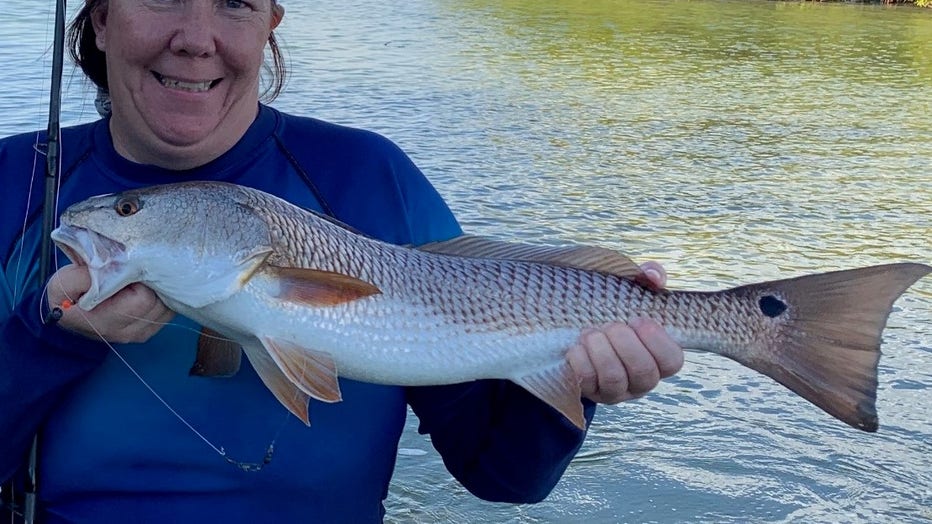
Redfish (Credit: Hubbard's Marina)
If we have low water temperatures, even a small change in surrounding water temperatures will really congregate bait, predators and increase feeding and thus angling opportunities. For example, if you have a large bay with the opening on the south side and wind is out of the northwest, if fishing within that western to the northern side, you are not only fishing the wind-protected shoreline but also in an area where the late afternoon sun has been baking all day.
Taking wind direction and the amount of sun exposure into account when considering what area to fish is super important this time of year. Then, once in that prime area, look for the pockets, cuts, or holes adjacent to the flat, dock lines, or shoreline that may hold those fish soaking up the warmer calmer waters. Present a very slow-moving soft plastic, cut dead bait, or live shrimp, and be cautious not to spook them. You should have a premium opportunity to hook up to a beautiful fish or two!
Sheepshead are loaded up around the local structures right now. This muddy and stirred-up cooler water condition is exactly what they are looking for and thrive on. Local bridges, big dock structures, rock piles, and even seawalls are good areas to find these guys hunting for crabs, shrimp, and other crustaceans and mollusks, but they will eat barnacles too!
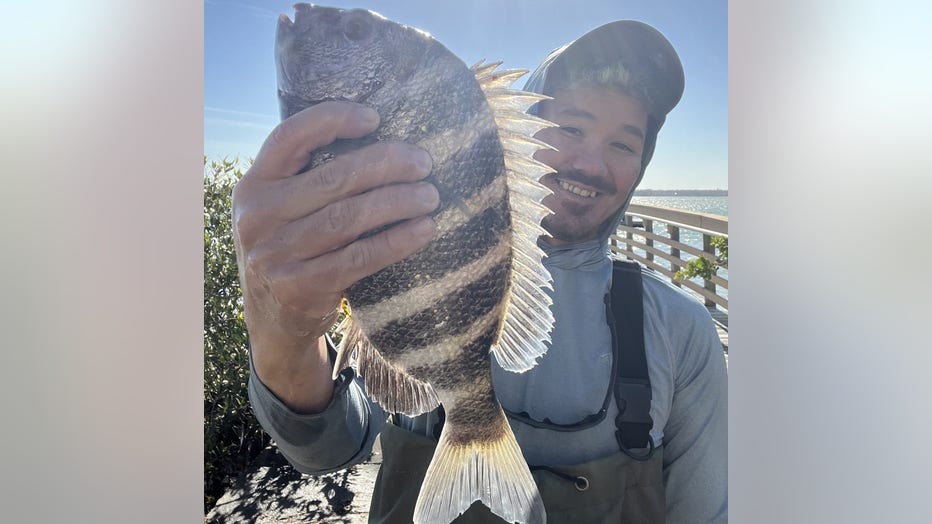
Sheepshead (Credit: Hubbard's Marina)
Using lighter tackle, minimal weights, and some hooks that are small but strong are a great way to target these good-eating hearty fish. Residential canal points under larger docks are great areas to look as well, especially areas where water is moving near a flat or pass.
Trout action has been steady around the area, but not what we are used to for this time of year. Typically, the trout bite is insane on the flats, but it’s been tougher to find good numbers of these guys in our area. However, the south shore area and upper bay have been much better and to our north is really the trout mecca it seems. Around Fort De Soto and Pinellas Point and through Boca Ciega Bay, we aren’t seeing the trout numbers in good concentrations like they should be this time of year.
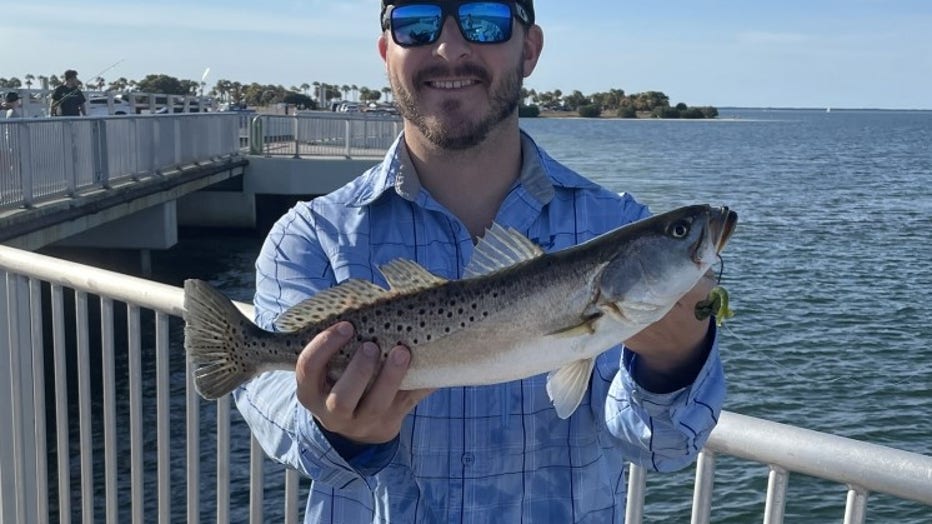
Trout (Credit: Hubbard's Marina)
However, in areas where you can find them, they have been biting well especially in those shallower spots. You can work slow-moving soft plastics or throw live shrimp to have a good chance for some nice trout. Local beach fishing piers have been producing some nice speckled trout too along the beaches.
Snook action has been well into the bay for the most part, but some local anglers are having good luck around closer to the mouth of the bay and passes. The bulk of the fish though is tucked back into more shallow back bay areas closer to the mouths of rivers, creeks, and bayous where warmer more consistent water temperatures are most common.
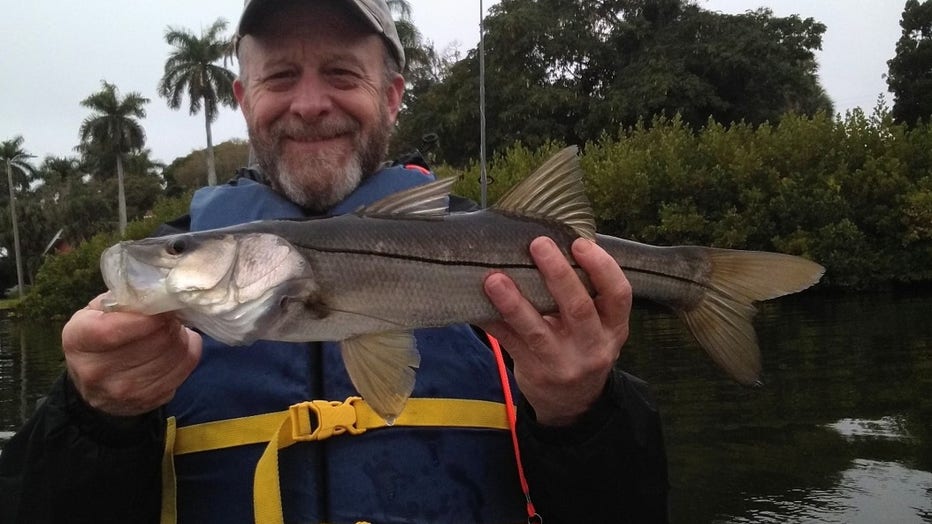
Snook (Credit: Hubbard's Marina)
These guys are smart and opportunistic feeders this time of year, and often you can find situations where you can see plenty of fish, but they are not feeding. Residential canals, especially up in the bay, can be loaded down with fish just meandering on the surface but often not feeding. Often, when you can’t see the snook in those canals that’s when you have a chance to catch one.
That dark bay mud of the back bay and canal areas is what really attracts and holds the snook. Just a degree or two warmer, that black bay mud really will radiate heat and keep the snook happy and hungry. Finding dock lights at night at the mouths of these canals will often net you a great opportunity for hooking up to beautiful fish. Getting them back off the dock on the lighter tackle required to produce a bite around the lights is a different story.
Bonnethead sharks are prolific around the bay, passes, and beaches right now. These cooler murky waters this time of year are a breeding ground for seemingly endless bonnetheads, and they love some live shrimp or even dead shrimp on the bottom.
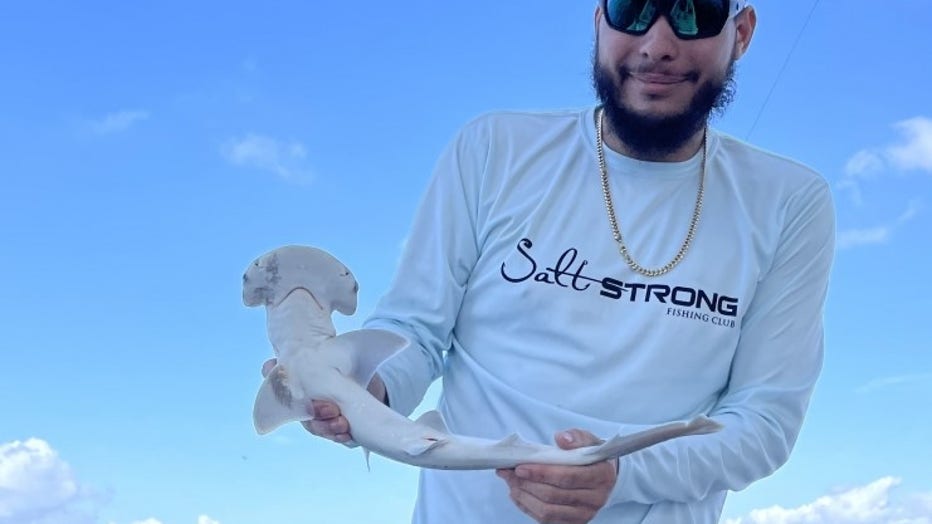
Bonnethead shark (Credit: Hubbard's Marina)
Many local anglers and visitors alike are enjoying catching prolific bonnethead sharks around the passes and beaches. In the bay, around certain channels and flats, you can find big numbers of these sharks too. Great fun on lighter tackle and make for plenty of excitement for any experience level angler.
Flounder action has been spotty but good throughout the area as of late. This is that time of year when they get more aggressive and ready to eat. They often can be found adjacent to structures like docks, bridges, rock piles, and other places similar. Also, like the structures, grass flats and oyster bars will hold flounder nearby. Look for those sandy patches or edges and make sure your bait is on or near the bottom. Once you find them, there’s often more in that vicinity too.
Near shore
Hogfish action near shore has been really going well for us and many anglers around 40-80 feet of water. We are really targeting them most around 50-70 feet of water and doing well using live shrimp and lighter tackle.
Our 10-hour all-day gives us the most amount of time to really dial into catching them, but the half-day sometimes rivals our all-day catches when they are ready to eat. They love some live shrimp, but will take sandfleas, rock shrimp, and fiddler crabs too. We do see them bite squid and small pinfish, but not super common. They are cruising just above the bottom, looking for crustaceans on that shell bottom adjacent to the ledges, flat hard bottom with the sea fans and other growth, or Swiss cheese areas with the occasional rock.
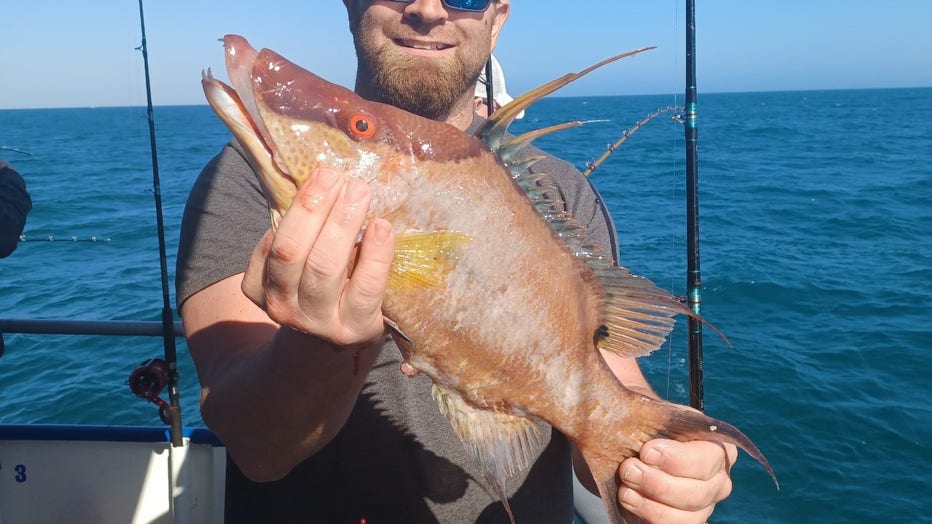
Hogfish (Credit: Hubbard's Marina)
If you get to larger ledges and bigger structures, it’s much trickier to dial into the hogfish with so many other more aggressive species around. Often, when targeting hogfish, you must pick through a bunch of the grey snapper, undersized red grouper, sand perch, lizardfish, and porgies before you start to see the hogfish bite well.
Patience and persistence are key when trying to find the hogfish, especially when trying to find the right depth and area. Using spinning rods and reels are the go-to for us due to the ability to feel the bite even more and have something that has a higher gear ratio.
Make sure you have a super light, sensitive rod with a solid backbone as a nice hogfish can really give you a great fight. We typically use around a 3000-4000 series spinning reel, and you really want something light and strong when going after this unique looking and great eating fish.
Because they are looking for those crustaceans, we often find using a knocker rig with a few red beads helps us to get some noise going and often helps to lure in the hogfish to your shrimp. Also, casting out away from the boat, letting your bait hit bottom, and every now and again lifting your wrist a bit to bounce that set up closer to the boat seems to help as well.
Each time that weight lifts off the bottom and bounces closer to the boat it creates a little puff of sand on the bottom which is detrimental to targeting almost any other quality fish but rings the dinner bell for the hogfish.
Red grouper action has been spotty near shore, but once you get deeper, they get more and more common. Finding keeper-sized red grouper is the tricky part near shore but fishing closer to 80-100 feet of water in the deepest near shore waters is going to give you the best shot at finding keeper fish.
Using whole threadfins with the tails cut, live pinfish or squid strips has been the best way to try and entice a keeper grouper into biting your baits. Using around 40-50lb leader and 6-7ot hooks, depending on your bait size, is also a good near shore red grouper setup. They love those potholes, smaller ledges, and flat hard bottom areas.
Lane snapper are prolific around our near shore waters and have been biting well for us. We are seeing them most often around 60-100 feet of water. They can be fairly large, and often we find them on squid, threadfin chunks, or live shrimp. They are more aggressive and less leader-shy than their mangrove snapper cousins too. This makes them an easier more prolific catch when fishing near shore.
Mangrove snapper are also biting steadily near shore. We are seeing them mostly deeper near shore closer to that 100 feet mark, but we are catching decent-sized mangroves as shallow as 50-60 feet of water. Using lighter 30-40lb leader and double snelled hooks on a small threadfin chunk is a great idea. Higher gear ratio reels are key too making sure you can retrieve plenty of lines in a hurry and set the hook more easily and quickly.
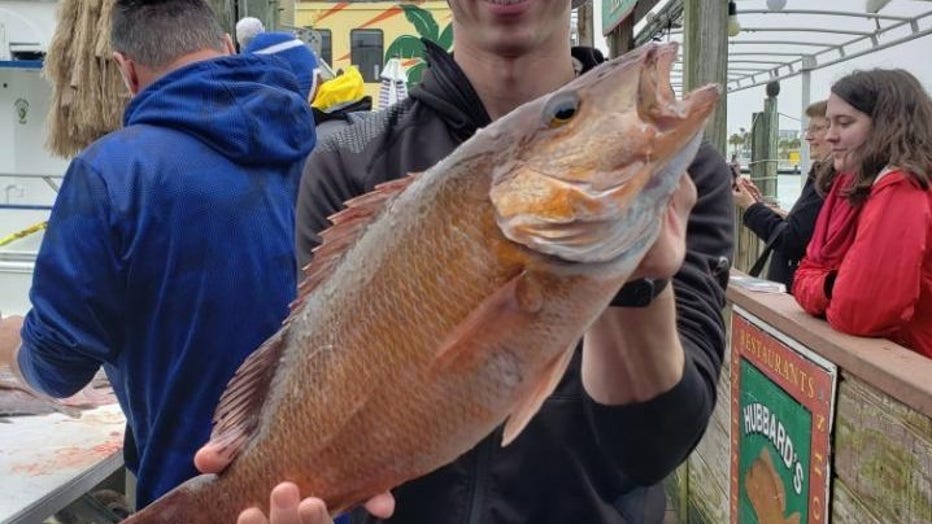
Mangrove snapper (Credit: Hubbard's Marina)
Offshore
We are in the midst of that deepwater spawning closure for grouper species right now that doesn’t allow you to keep any of the shallow-water grouper complexes beyond 20 fathoms or 120 feet of water.
This means red grouper and scamp must be released if you are past that closure line. Often this time of year, this means lighter loads and more room on the boats, and we still do well on the fish too. We will fish deeper than the closure line on our 39 and 44-hour trips at night targeting mangrove snapper and other species.
Then, during the day, when we plan to target the grouper, we will move shallower inside the ‘fence’ where the grouper are legal to keep once again. Once we have them on board in the fish box then you must stay inside the open area and not venture deeper again.
Red grouper action is going well for us around that 100-120 foot area, but the unfortunate part, as of late, is the weather restricting our ability to get out there and really hunt for them in any fashion. However, we are hoping this upcoming full moon will allow us the opportunity to catch them on our 44-hour trip just on the backside of the moon when often the daytime bite starts to improve. Plus, we will have plenty of time to venture deeper and target the mangrove snapper in 140-160 feet at night during the first half of the trip too.
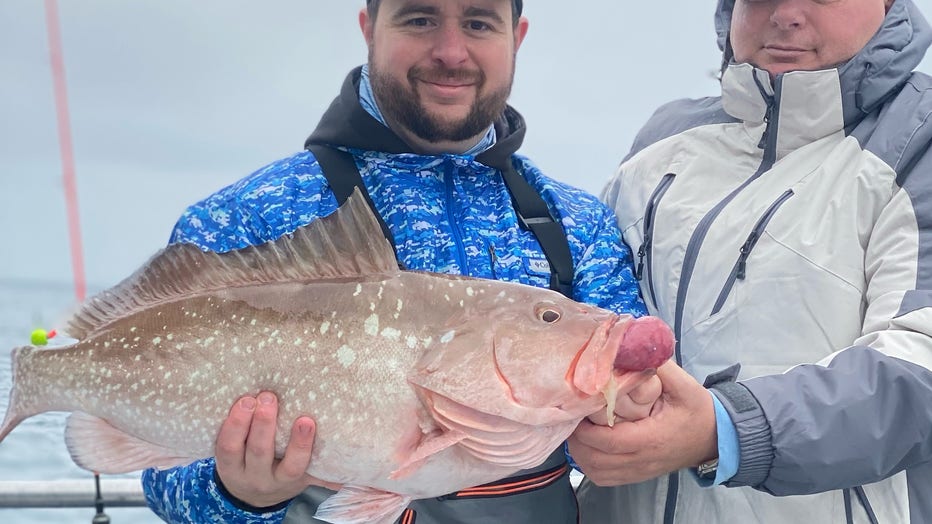
Red grouper (Credit: Hubbard's Marina)
Mangrove snapper action has been going well for us offshore in deeper waters beyond 100 feet of water. We are seeing these guys in large average sizes, and they have been biting aggressively for us too. They are doing well on cut threadfins and double snell rigs with high gear ratio reels and those sensitive lighter rods allowing you to ‘feel’ the bite more easily.
Mangrove snapper are one of my favorite fish to target and catch because they are challenging to catch often and consistently. Most of the time, the anglers catching mangroves consistently and often are the ones who have the best grasp over feeling the bite, holding bottom, and presenting their bait naturally. That skill transfers well into targeting and catching all sorts of bottom species offshore. Focusing on mastering the mangrove snapper is a great way to really improve your offshore fishing prowess in a hurry.
The pelagic action hasn’t really been super prolific for us offshore, mostly because it’s been so tricky to get out there to the offshore waters due to weather. Plus, when we are able to get out there behind the fronts, the water has been murkier and stirred up making hunting pelagics much more difficult if not impossible.
If you can get out there and the water is cleaner, you can find the blackfin tuna well typically this time of year. Plus, the kingfish are around if that warmer water current can pull them in. Also, wahoo are around often too.
You just never know and keeping that flat line out, pitch rod ready and trolling between spots is always a good idea if you see the ‘life’ on the surface meaning the bait or the boils or the fish breaking the surface.
TERMS OF REFERENCE:
INSHORE – from the back bays out to the bridges and including right on the beaches
NEAR SHORE – From the beaches out to 20 miles, or up to 100ft of water
OFFSHORE – from 20 miles or 100ft and beyond
For more fishing reports, photos, videos and more check out Hubbard’s Marina on Facebook, Instagram, YouTube, or Snapchat. Just simply search "HubbardsMarina" and do not forget our family motto, "If you’re too busy to go fishing, you’re just too busy!

